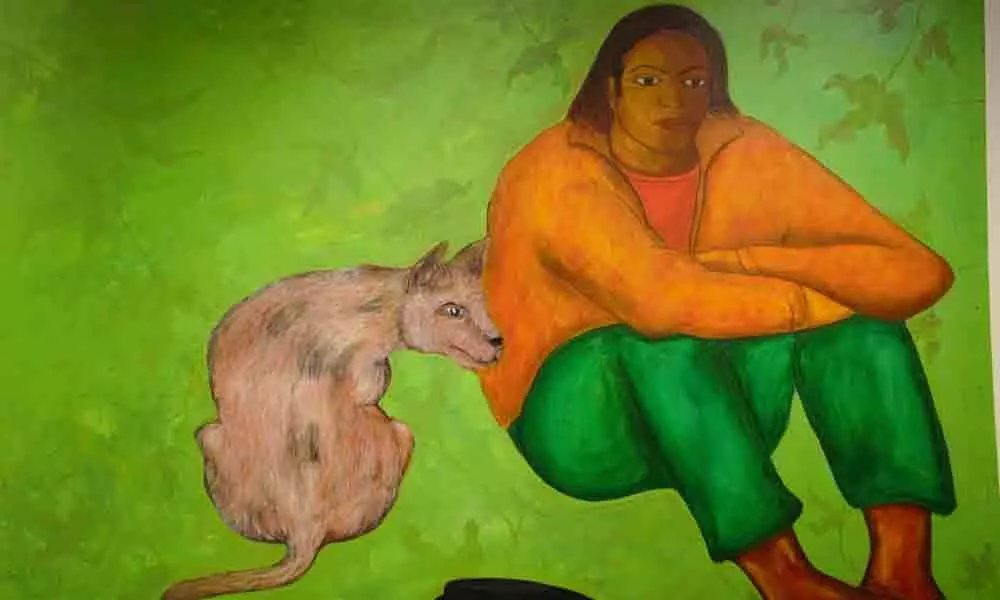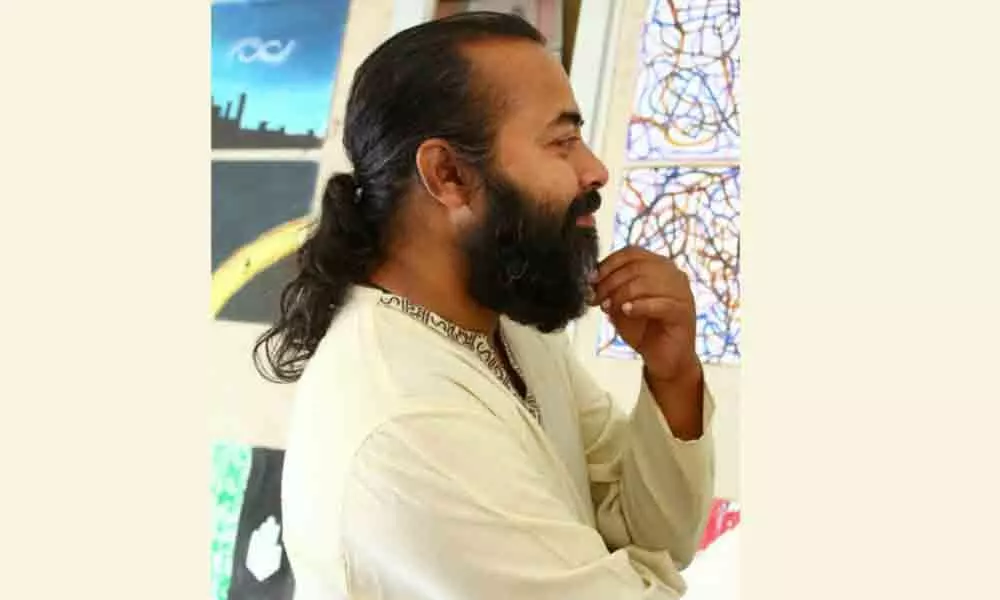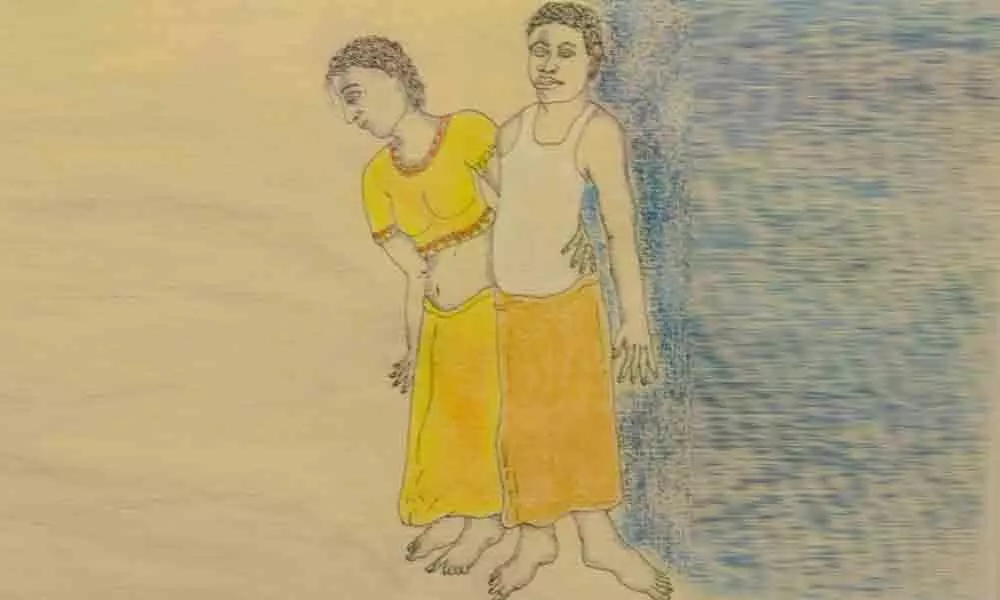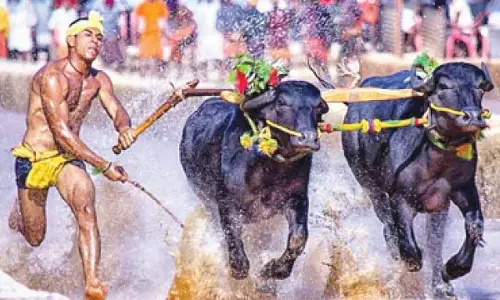An artistic journey
‘The Retrospective Exhibition’ of late Sudip Ghose’s works was a homage to the artist. Sudip’s artistic sojourn is marked by changes in the representation of human figures and their contexts
The Retrospective Exhibition' of drawings and paintings by late Sudip Ghose (January 23, 1976 – May 26, 2019), has been put up as a homage to the departed artist. It comprises of 50 works, mostly acrylics on canvas, were representative of the two decades of his artistic journey was curated by Prof. MC Mohan, NIFT.
Sudip Ghose was a prolific painter, who was religious in his work culture. He has left behind a huge body of work ranging from large canvasses painted in acrylics to small and intimate drawings. The selected works representative of the various shifts and changes in the evolution of his language.
Having evinced interest in drawing as a child Sudip joined the Fine Arts college of Andhra University for the bachelor's programme. His early training under teachers V Ramesh and Sistla Srinivas laid the foundation of an artistic journey that eventually led him to study under K Lakshma Goud and DLN Reddy at the Sarojini Naidu School of Fine Arts, University of Hyderabad. On completion of his post-graduate studies, Sudip joined the faculty of National Institute of Fashion Technology, Hyderabad.
"The pulse and rhythm of Sudip Ghose's art come from a faithful affinity to nature and milieu. The good spring of his imagination originates from a keen and empathetic observation of people around him, human relationships and their contradictions. In Sudip's more recent works the sensory experiences of dress, props and the human body are cross projected to produce an uncanny world of reconstructed perceptions that are dilated and stretched in their flaccidness," says Mohan.
Sudip's artistic sojourn is marked by changes in the representation of human figures and their contexts. In his early works, the human image receives a formal treatment, focussing more on the physical attributes. Over the years we can see a remarkable shift from the physical to the emotive and spiritual; from explicit signs to inexplicable experiences.
About Sudip's work, Mohan says, "Psychological displacements and personal associations add to the symbolic ambivalence of his compositions, making his images come closer to inexplicable experiences than to explicit signs. In the postures of some figures, we subjectively experience the primaeval; in the ripe anatomy of others, we savour a fruity succulence. And when they are paired with a pet the figures are wrought by a combination of decorative wilfulness and expressive distortion and are imbued with an effusive sensuality."
"Sudip's art is rich in suggestions; they engage us without bracketing our fund of knowledge, experience or memories, but also cannot be narrativised without trivialising it, without depleting its sensory particularities," Mohan shares.
One can see that in his paintings have spaces which are dominated by a male or female protagonist often portrayed with animated gestures. The dilemmas, conflicts and contradictions of life are portrayed by setting up contrasts in postures and gestures.
Although he was known as a figurative painter, the retrospective brings to light Sudip's experiments with non-representational works, that seem to break the monotony in a visual approach. A series of abstract paintings, acrylics on canvas, show his struggle to develop a valid visual language that captures the sensorial and emotive feelings through pure colour and texture. The spontaneity and urgency are seen in the bold patches of colour and the rapid strokes of the brush.
The drawings of male and female figures from his early years to the present show how the artist has evolved; changes in the style of representation that correspond to changes in thought process and perceptions. The human image undergoes a transformation from the pure visual emotive expressiveness.

















